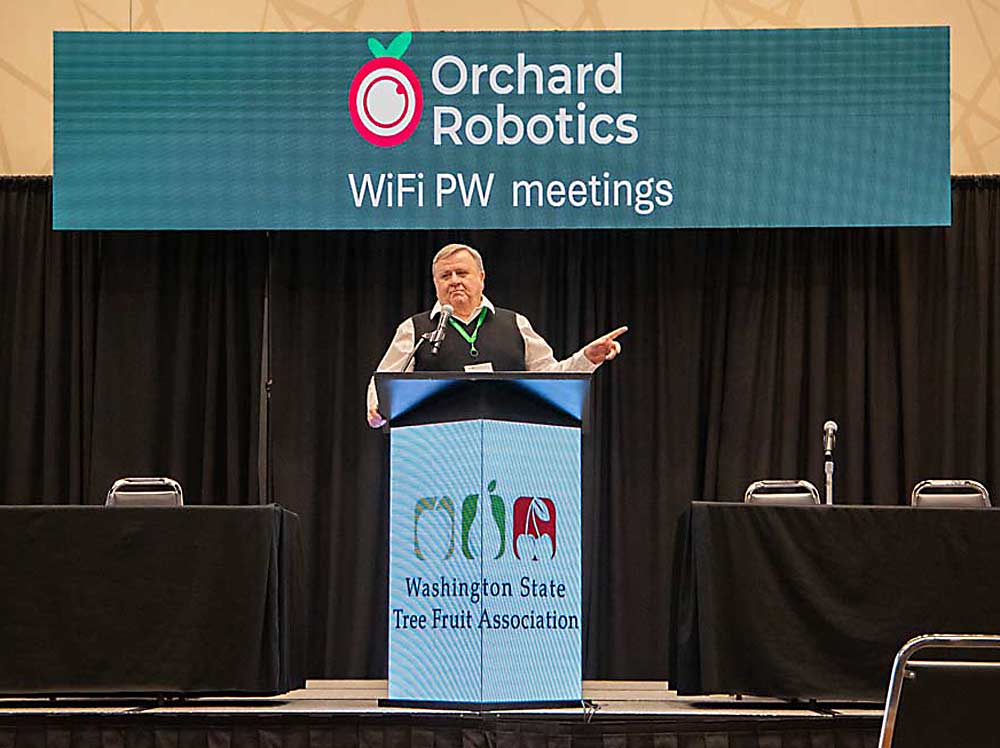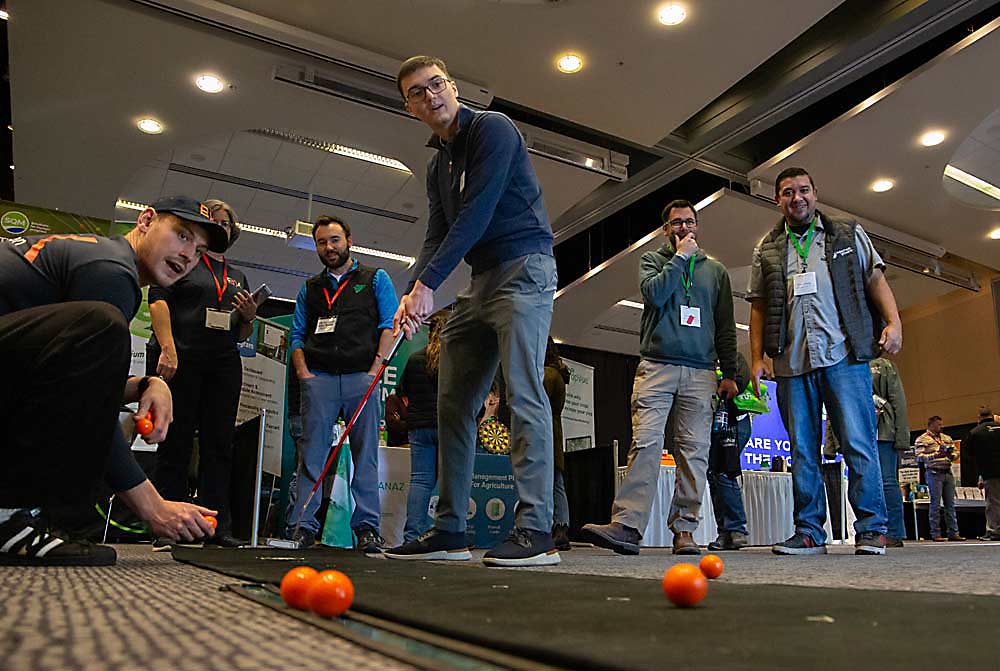
Gary Grove, a soon-to-be professor emeritus of plant pathology at Washington State University, told growers they face “significant but surmountable challenges” at the Washington State Tree Fruit Association Annual Meeting at the Yakima Convention Center.
Not to worry, he said, during his Baetjer Address, considered the academic keynote of the annual gathering and trade show that kicked off Dec. 9. The industry has faced plenty of challenges before and made it through: the Alar scare, destructive fire blight years and cherry fruit fly, to name a few.
But the industry also has, and has always had, a lot of advantages — ample resources, a cooperative spirit, top-rated research talent and more.
“That’s what’s going to get us through all of this,” said Grove, a history fan who sprinkled his presentation with anecdotes from Russian World War II biographies.
The theme of the annual meeting is “Navigating Adversity,” a nod to the stark economic struggles in the face of low fruit prices and increasingly restrictive and expensive regulations. The event continues through Dec. 11 with education presentations at the convention center and a trade show at the nearby Yakima Valley SunDome.
Jeff Baldwin, a grower and chair of the annual meeting, told growers the industry overall might just break even in 2024 with Honeycrisp prices, so far, higher than last year.
Honeycrisp volume was down a little this year, but overall, the crop is nearly as large as the 2023 crop of 136 million boxes. That surprised him, Baldwin said.
He urged growers to remain informed and engaged in the regulatory, political and economic systems that affect their bottom lines.
“No grower should be surprised by his returns,” he said.
Nationally, Chris Gerlach of the U.S. Apple Association said the 2024 crop was expected to be down by about 10 percent from what was likely the largest-ever crop in 2023. And for many of the varieties, prices are higher this year than in 2023.
Jon DeVaney, president of WSTFA, told growers to expect proposed changes to Washington state law with respect to farm labor, including mandating collective bargaining and making undocumented and striking workers eligible for unemployment payments.
As usual, he urged growers to discuss challenges with their elected officials and the media, and he encouraged them to collect on subsidies designed to mitigate the effects of regulations. If they don’t, policymakers may presume the industry is not really having the financial difficulties it publicly laments.
For example, a program designed to reimburse growers for some emissions taxes has been used by fewer people than would qualify.
“This helps make the case that the industry is in a dire situation,” DeVaney said. “And not so we can ask for more government money, but it gives us more leverage to push back against the regulatory works that are put into this position in the first place.”

Marketing was the topic of a session in the afternoon, as Julie DeJarnatt, vice president of marketing and brand strategy for Chelan Fresh, made her pitch for the Eat More Apples campaign, a nationwide, nonprofit and volunteer-led marketing effort.
Apples remain the second-most consumed fruit in the U.S., behind bananas, but consumption has remained relatively static over the past 20 years, DeJarnatt said. When consumers were queried about how they define healthy foods, apples met 10 of 13 traits, such as being fresh, a good source of nutrients, and containing fruits or vegetables. “We’ve got them, we just need to do a better job of promoting them,” she said.
About 200 growers have joined in as partners, signing a letter of support for the campaign. DeJarnatt urged others to join. (Good Fruit Grower wrote more about the Eat More Apples campaign in our October issue, online at: goodfruit.com/industry-advocating-eat-more-apples-campaign).
To end the afternoon, keynote speaker Ray Starling told growers to expect President-elect Trump to follow through with tariffs.
Trump truly believes in them as a broad tool of foreign policy, not just tit-for-tat disputes, said Starling, general counsel for the North Carolina Chamber of Commerce and author of “Farmers Versus Foodies: A Look at the Outside Forces Forging the Future of Farming and Food.”
Tariffs push back against adversaries such as China. They level the playing field against other countries that put tariffs on U.S. products. And they force countries to earn access to our consumers, he said.
Starling also believes the specialty crop industries’ lament about rising H-2A costs should be told in “‘America First’ terms.” Forcing farms out of business means fewer jobs in the United States, something that would resonate with Trump, Starling said.
—by Ross Courtney and Shannon Dininny








Leave A Comment